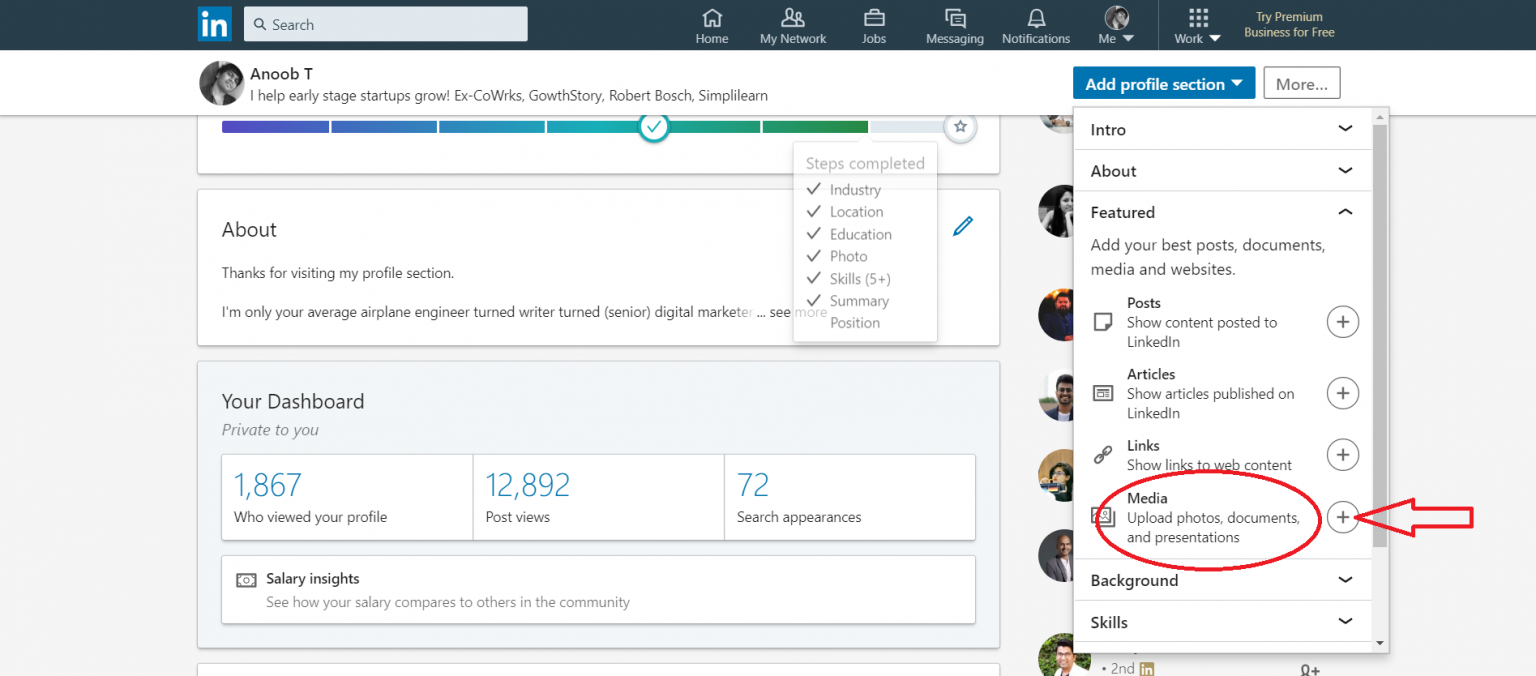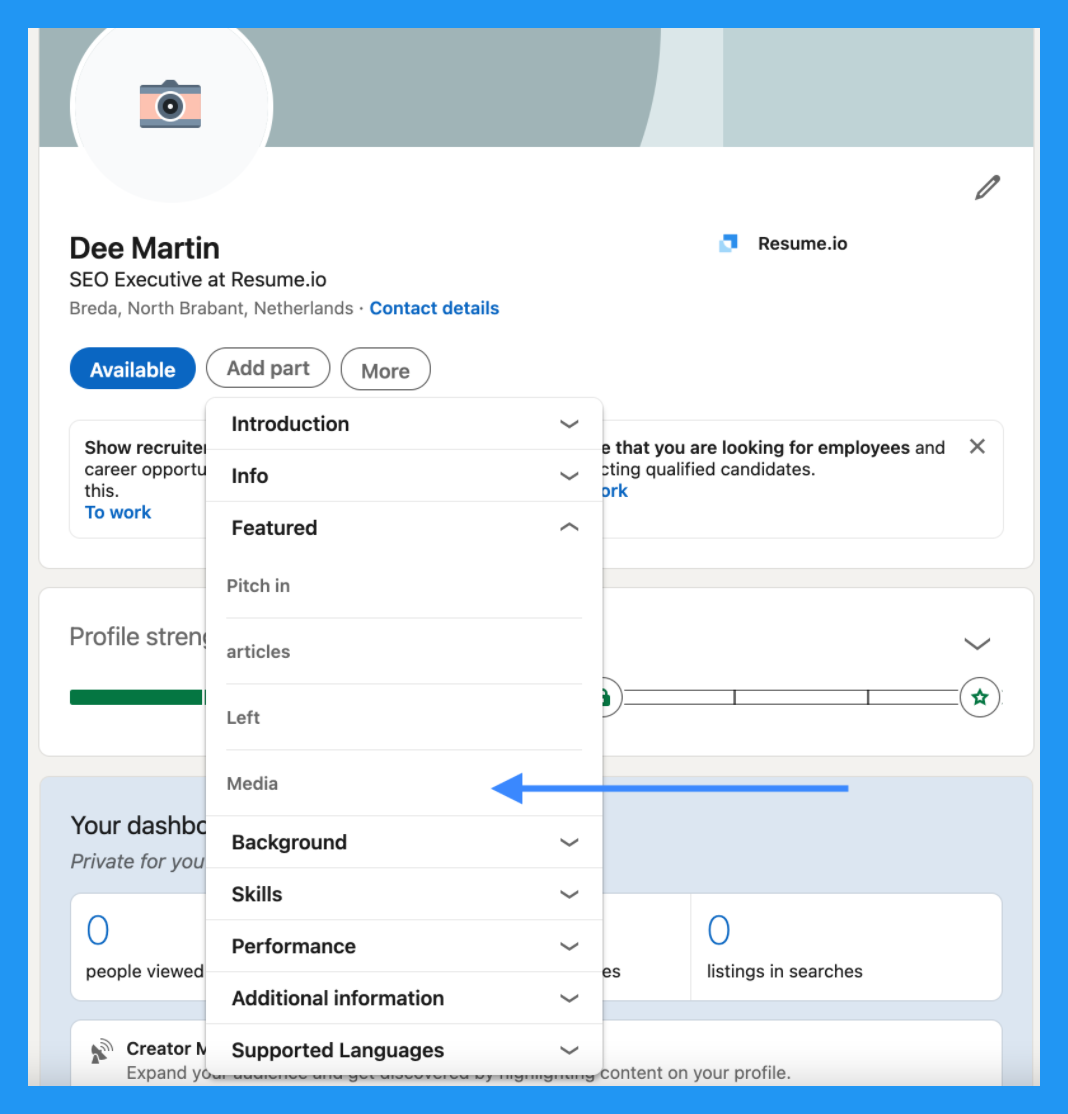Deciding whether to upload your resume to LinkedIn can feel like a daunting task. Should you share every detail of your professional life, or keep some things private? In today’s digital world, your online presence can either enhance or hinder your job search. In this post, we’ll explore the benefits of uploading your resume to LinkedIn, helping you make an informed decision that aligns with your career goals.
Benefits of Uploading Your Resume to LinkedIn

Uploading your resume to LinkedIn can open up a plethora of opportunities and benefits that can aid your job search and professional networking. Here are some compelling reasons why you should consider it:
- Increased Visibility: When you upload your resume, your profile becomes more attractive to recruiters and potential employers. They can easily see your skills, experience, and qualifications, making them more likely to reach out to you for opportunities.
- Enhanced Personal Branding: Your resume is a narrative of your professional journey. By sharing it on LinkedIn, you can craft a cohesive personal brand that communicates who you are and what you can bring to the table. This helps you stand out in a crowded job market.
- Easier Application Process: Many employers look for candidates through LinkedIn. By uploading your resume, you streamline the application process. They can quickly review your credentials and potentially move you along in their hiring process.
- Networking Opportunities: When you make your resume available, you may find that connections within your network share it with others seeking candidates. This can lead to referrals, which can be incredibly beneficial in landing a job.
- Showcases Your Skills: Recruiters are increasingly looking for candidates with specific skills. By uploading your resume, you can effectively highlight certifications, software proficiencies, and pertinent experiences that may not be evident in your LinkedIn profile alone.
With all these benefits, uploading your resume to LinkedIn can be a smart move in your career journey. However, it’s important to weigh these advantages against your comfort level regarding privacy and how you want to present your professional self online.
Drawbacks of Sharing Your Resume on LinkedIn

While uploading your resume to LinkedIn may seem like a great idea, it’s crucial to weigh the potential downsides first. Here are a few drawbacks to consider:
- Privacy Concerns: When you upload your resume, it may become visible to anyone with an internet connection. This could expose your personal information, like your phone number and email address, to strangers. You might want to think twice before making sensitive information public.
- Outdated Information: Resumes can quickly become outdated, especially in our fast-paced working world. If your LinkedIn resume doesn't reflect your current skills or job status, it could mislead potential employers and create a poor first impression.
- Reduced Personalization: Resumes are often tailored for specific job applications, but a generic LinkedIn upload lacks that personal touch. It may not highlight your relevant skills or experiences as effectively as a customized application would.
- Increased Competition: When job seekers upload their resumes, there's often a flood of candidates vying for the same opportunities. This can make it tough to stand out in the crowd.
- Employer Reservations: Some employers may view an uploaded resume as a sign of desperation or lack of effort in applying. They may prefer candidates who take the time to tailor their applications for specific job postings.
How to Effectively Upload Your Resume on LinkedIn
If you’ve weighed the pros and cons and decided to press forward with your LinkedIn resume upload, you’ll want to do it right. Here are some effective tips to ensure your resume shines:
- Keep It Current: Always ensure that your resume is up to date, reflecting your most recent experiences, skills, and education. Pay attention to formatting and clarity.
- Use Keywords: Incorporate relevant industry keywords that align with the positions you’re targeting. This increases your visibility in recruiter searches.
- Consider Privacy Settings: Adjust your privacy settings to limit who can see your resume. This way, you can maintain a degree of control over your information.
- Leverage the Summary Section: Supplement your resume by writing a compelling summary that highlights your career aspirations and key achievements. Keep it concise but informative.
- Engage With Your Network: After uploading, engage your LinkedIn connections by sharing updates or posts about your job search. This can help make your resume more visible to potential employers.
By taking these steps, you not only enhance your online presence but also maximize your chances of attracting the right opportunities! Happy job hunting!
5. Alternatives to Uploading Your Resume
While uploading your resume to LinkedIn can certainly enhance your job search, it's not the only option out there. In fact, many professionals opt for various alternatives to showcase their qualifications and experiences effectively. Here’s a look at some practical substitutes:
- LinkedIn Profile Optimization: Instead of a plain resume upload, focus on creating a robust LinkedIn profile. Make sure to fill in all sections like your experience, education, and skills with detailed descriptions that reflect your career journey. A well-crafted profile often serves as a dynamic resume.
- Work Samples: If your profession allows for it, consider sharing work samples or a portfolio directly on your profile. Whether it’s writing, design, or coding, providing tangible examples can give potential employers insight into your skills and creativity.
- Networking: Actively engage with industry professionals by commenting on posts, joining groups, and participating in discussions. Building relationships can often open doors to job opportunities that a resume alone might not.
- Personal Website or Blog: Creating a personal website or blog can be an excellent way to showcase your expertise and achievements. It allows for a more comprehensive view of your skills, projects, and philosophies, which a standard resume may not capture.
- Video Introductions: Some professionals are turning to video to convey their experience and personality. A short video introduction can give employers a better sense of who you are beyond the bullet points of a resume.
Each of these alternatives not only adds variety to your job application process but also helps you stand out in a crowded job market. Choose the methods that align best with your career goals and personal style!
6. Conclusion
Deciding whether to upload your resume to LinkedIn is a personal choice that depends on a variety of factors, including your career stage, industry norms, and personal comfort with sharing your information. Here’s a quick recap of what we’ve discussed:
- Pros: Uploading your resume increases visibility, provides a formal overview of your qualifications, and can simplify the application process for recruiters.
- Cons: There are privacy concerns, potential conflicts with ATS systems, and the risk of redundancy with your LinkedIn profile.
- Alternatives: Consider optimizing your LinkedIn profile, sharing work samples, networking effectively, or using a personal website to showcase your professional journey.
Ultimately, there’s no one-size-fits-all answer. Depending on how you want to present yourself to potential employers, you might find that a combination of methods works best for you. Whether you choose to upload your resume or explore alternative avenues, make sure it reflects your authentic self and aligns with your career aspirations. Happy job hunting!
 admin
admin








